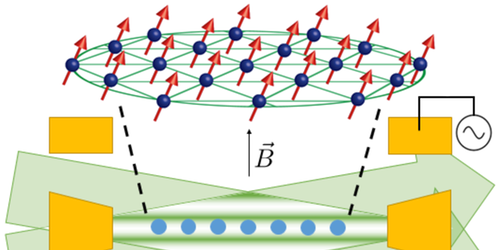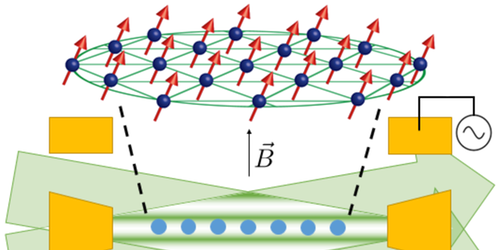Tracking a Trapped Ion Crystal
Scientists are able to measure tiny forces, as well as gravitational waves, by recording the slightest budges of a test mass. Typically, this test mass is a solid object, like a vibrating cantilever or a suspended mirror, but a new experiment uses a two-dimensional crystal of trapped ions as its force sensor. With a measurement scheme based on the spin state of the ions, the researchers detect center-of-mass displacements of the crystal as small as 50 picometers. This distance is 40 times less than the amplitude of the zero-point motion associated with the crystal’s quantum ground state. The technique could allow detection of extremely small electric fields, which may prove useful in the search for dark matter.
Kevin Gilmore from the National Institute of Standards and Technology in Boulder, Colorado, and his colleagues trapped roughly 100 beryllium ions with electric and magnetic fields, forming a horizontally oriented single-plane crystal. The ions were cooled to 0.5 millikelvin, and their spins were aligned with a magnetic field pointing up. The researchers then exposed the ions to an optical wave that caused the spins to rotate by an amount that depended on their vertical displacement from the trap center. After several milliseconds of rotation, the team measured the fraction of ions with spin up, which allowed them to infer the center-of-mass displacement of the crystal in the vertical direction. The device acts as a force sensor with a predicted sensitivity of less than 1 yoctonewton ( 10−24 newtons). The ion system can also measure electric fields down to 1 nanovolt/meter, which could potentially pick up the signature of hypothetical dark matter particles called “hidden photons.”
This research is published in Physical Review Letters.
–Michael Schirber
Michael Schirber is a Corresponding Editor for Physics based in Lyon, France.





